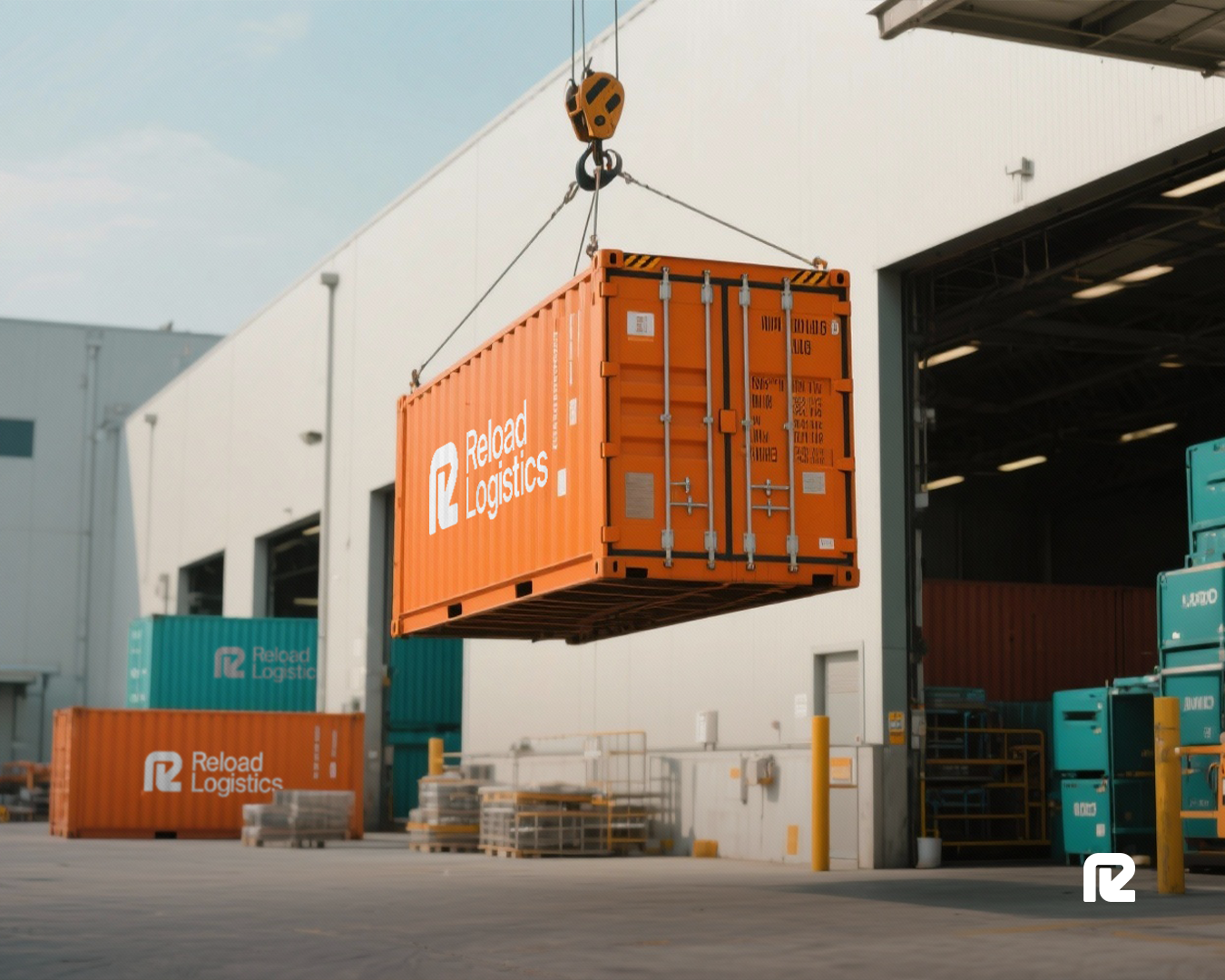Cargo Shipping Documentation: A Complete Guide


Shipping any type of cargo to any location requires a set of documents that verify its contents, value, and destination to ensure smooth movement through ports and customs. Missing or incorrect paperwork can cause costly delays, fines, or even a hold on cargo.
In this guide, we’ll explore the key types of cargo shipping documentation, their importance, and how logistics providers can support businesses to stay compliant from departure to delivery.
What is Shipping Documentation?
Shipping documentation refers to the set of legal papers required to move goods from one point to another, needed for shipments both domestically and internationally. These documents define the responsibilities of each party involved, verify the cargo’s contents and value, and serve as proof of compliance with trade and transport regulations.
Essentially, shipping documentation ensures that cargo moves safely, legally, and efficiently through every stage of the supply chain.
Importance of Accurate Documentation for Timely Delivery
Even minor inconsistencies with shipping documentation, such as mismatched product descriptions or incorrect HS codes, can cause costly delays.
Accurate documents make sure:
• Cargo is cleared through customs fast at ports and through borders.
• The correct duty and tax calculations are made from the beginning.
• There’s a reduced risk of fines or holds on cargo.
• Trust is established between buyers, sellers, and freight partners.
Reload Logistics prioritizes documentation accuracy by verifying every detail before shipment, helping clients maintain on-time deliveries and regulatory compliance.
Types of Shipping Documents
Shipping documents can be grouped into a few key categories based on their purpose within the supply chain. Understanding these categories helps when preparing and managing paperwork for both domestic and international shipments.

Key Elements of Each Document
Before we get into the details of international and domestic shipping documentations, below are the key elements of some of the most common documents needed for shipping:
• Bill of Lading: Includes shipper and consignee information, a description of the cargo, weight, quantity, origin and destination ports, and shipping terms. Serves as proof of receipt and transport contract.
• Packing List: Lists the contents of each package, including weights, dimensions, handling instructions, and container numbers. Used during loading, unloading, and customs inspection.
• Commercial Invoice: Specifies product details, values, payment terms, and applicable taxes or duties.
• Delivery Order: Issued by the carrier or freight forwarder, authorizes the release of cargo to the consignee once all charges and paperwork are cleared.
• Freight Invoice: Sent by the carrier or logistics provider; detailing all transport-related charges, including freight rates, handling fees, and surcharges.
• Export License: Authorizes the export of specific commodities and ensures compliance with regulations.
• Import License: Permits the importation of controlled goods, verifying that the importer meets local regulatory and safety standards.
International Shipping Documents
International trade requires several key documents that validate product value, origin, and shipping details. These ensure compliance with customs regulations and protect all parties in global transactions.
Proforma Invoice
This shipping document is issued before the shipment is transported and serves as a preliminary bill for the buyer. It outlines the goods, their value, and payment terms, which is important for importers to be able to secure financing or import permits before dispatch.
Commercial Invoice
The Commercial Invoice acts as the official transaction record between the buyer and seller. This document is mainly used by customs authorities to verify cargo value and calculate tariffs or VAT. It includes:
• Buyer and seller details
• Description of goods
• Quantity and value
• Currency of sale
• Payment terms
• Applicable taxes or duties
Export Packing List
This accompanies the commercial invoice and includes details of how the goods are packaged. It lists:
• Package numbers and weights
• Dimensions
• Handling instructions
• Container or pallet references
Certificates of Origin (COO)
A Certificate of Origin confirms where goods were manufactured and determines eligibility for preferential duty rates under trade agreements. For example, exports within the SADC or AfCFTA regions may qualify for reduced tariffs.
Certificate of Free Sale
Certifies that goods, often pharmaceuticals or soft commodities, are legally sold and safe for use in their home market. Some countries require this certificate before allowing imports.
Shipper’s Letter of Instruction (SLI)
The SLI is twofold. It first provides directions for the freight forwarder, including how cargo should be handled, routed, and billed, as well as authorizing the forwarder to act on behalf of the exporter in preparing transport documents.
Inland Bill of Lading
The Inland Bill of Lading is used when goods move domestically by road, rail, or inland waterways before reaching the export port. It serves as a receipt and transport contract within the country of origin.
Ocean Bill of Lading
This confirms that cargo has been loaded onto a vessel for international shipping and specifies the vessel name, port of loading and discharge, and delivery terms.
Air Waybill (AWB)
This shipping document functions as both a contract and a tracking document for all air freight. Airlines use the AWB to monitor the movement of goods throughout the journey. It’s issued by the carrier and includes:
• Shipper and consignee information
• Flight route and number
• Cargo description and weight
• Freight charges
Letter of Credit (LC)
A Letter of Credit is a financial document issued by a buyer’s bank guaranteeing payment to the seller once specific conditions, like proof of shipment or delivery, have been met. It provides assurance to exporters that they will receive payment as long as all documentation is complete and accurate.
Domestic Shipping Documents
Even though domestic shipping might not require the same amount of paperwork that international trade does, proper shipping documentation is still necessary for smooth transport, accurate billing, and accountability between shippers and receivers.
The below documents serve as proof of shipment, confirm product details, and support logistics providers to track and manage cargo efficiently.
Bill of Lading (B/L)
In domestic logistics, the Bill of Lading functions as both a transport contract and a receipt for goods being moved between locations within the same country. It outlines details including:
• Shipper and consignee names and addresses
• Description of goods
• Quantity and weight
• Pickup and delivery locations
This shipping documentation confirms that the carrier has received the cargo in good condition and agrees to deliver it as specified. It’s particularly useful for high-value or multi-stop shipments, where accountability and clear record-keeping are crucial.
Reload ensures every domestic Bill of Lading aligns with the shipment’s physical and commercial documents to avoid discrepancies during pickup or delivery.
Packing List
The Packing List document basically outlines what’s inside each package, crate, or container. For domestic transport, it helps:
• Verify that all goods listed on the invoice are included.
• Streamline warehouse loading and unloading.
• Assist in quick damage checks and stock reconciliations upon delivery.
Commercial Invoice for Domestic Shipping
Even within domestic supply chains, a Commercial Invoice provides a financial record of the transaction between seller and buyer. It includes:
• Product descriptions and quantities
• Unit and total prices
• Applicable local taxes (such as VAT)
• Payment terms and reference numbers
These invoices form part of the larger documentation trail that connects inventory management, billing, and audit reporting. Maintaining consistent documentation across both local and cross-border shipments helps ensure transparency, efficiency, and compliance throughout every stage of logistics.
Specialized Shipping Documents
In addition to standard cargo documents, certain goods require specialized paperwork, depending on the nature of the cargo. This shipping documentation is essential for shipments involving regulated, restricted, or hazardous materials.
Hazardous Material Shipping
These materials include chemicals, flammable products, and some medical substances. All dangerous goods must be clearly classified and packaged according to strict guidelines and transport regulations.
Reload assists clients by ensuring proper documentation and packaging to meet these regulations, reducing the risk of penalties or safety incidents.
The Dangerous Goods Declaration Form (DGD) provides detailed information about hazardous items being transported, including the shipper’s declaration that the cargo has been correctly packaged, labeled, and classified. Without this document, carriers are legally prohibited from loading the shipment.
Emergency Response Information for Hazardous Materials
Every hazardous materials shipment must include emergency response information to offer instructions for handling incidents like spills, leaks, or fires. This document contains safety contacts, chemical data, and first-response steps to protect people and other cargo.
Reload ensures that this documentation is clear, compliant, and accessible to all handlers during transit.
The Role of Freight Forwarders in Cargo Documentation
One main role of a freight forwarder is to coordinate the documentation between shippers, carriers, and customs authorities, acting as intermediaries who simplify complex procedures into manageable steps.
Reload Logistics serves as a single point of contact for clients by:
• Preparing, verifying, and submitting export and import documents
• Coordinating with carriers and port authorities for timely clearance
• Ensuring all shipping documents comply with international trade laws
This end-to-end documentation management reduces the risk of delays, ensures compliance, and ensures shipments reach their destination without unnecessary obstacles.
With Reload Logistics managing your documentation, you can have confidence that your cargo will move seamlessly through every checkpoint.
FAQs
1. What is included on a shipping document?
Details such as the shipper and consignee information, cargo description, quantity, weight, packaging type, and delivery terms. It may also specify carrier details, route, and any special handling instructions.
2. Who prepares shipping documents?
By the exporter or shipper, or freight forwarders assist in verifying and organizing them. This ensures all paperwork meets customs and transport requirements before goods move.
3. What are the 5 documents used in transportation?
The five most commonly used transport documents are Bill of Lading, Commercial Invoice, Packing List, Insurance Certificate, Certificate of Origin.
4. Which document is required for cargo handling?
The Packing List and Bill of Lading are essential for cargo handling. They help carriers, warehouse teams, and customs officers identify packages, confirm contents, and ensure proper loading and unloading.
5. What document is required for every shipment?
Every shipment must have a Bill of Lading. It serves as proof that the carrier has received the goods and outlines the terms of transport.
6. What documents are needed for international shipping?
Key international shipping documents include the Bill of Lading, Commercial Invoice, Packing List, Certificate of Origin, Insurance Certificate, and any export or import licenses required by local authorities.
Categories






